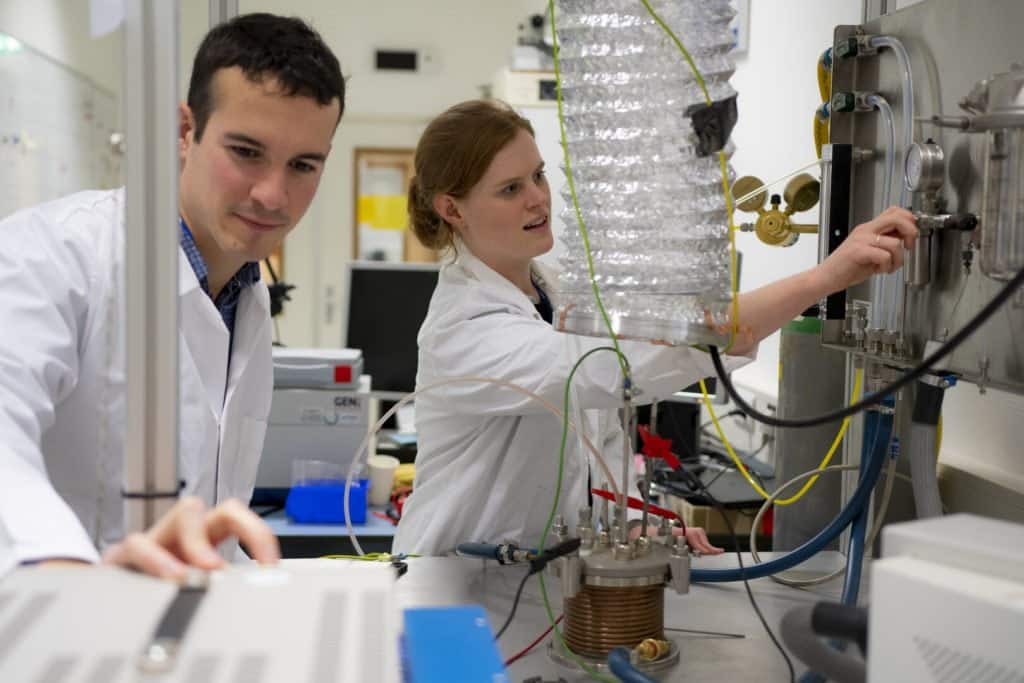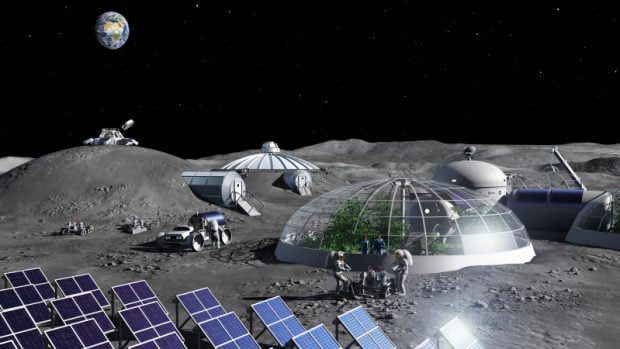A team of European researchers is working on a system capable of producing breathable oxygen from simulated samples of lunar dust.
“Being able to acquire oxygen from lunar dust would be extremely useful for future colonists, both for respiration and in the local production of rocket fuel”, has explained Beth Lomax, chemist at the University of Glasgow, in a press release from the European Space Agency (ESA).
With the help of his colleague Alexandre MeurisseESA researcher Beth is currently testing a prototype generator that could eventually lead to the production of oxygen from lunar dust.
The system is currently being tested in the materials and electrical components laboratory of the European Space Research and Technology Center (ESTEC), which is based in Noordwijk, the Netherlands.

Moon dust oxygen: the prototype works
Of course, it will need to be optimized to make it suitable for use on the Moon (for example by reducing its operating temperature), but the prototype works. Lomax and Meurisse are currently working on and extracting oxygen from facsimiles of lunar dust, but given the composition of the material they are fairly confident that their approach will work on actual lunar dust as well.
According to the ESA, samples of lunar dust known as regolith that returned to Earth during the Apollo missions were composed of around 40-45% oxygen. ESTEC scientists are developing a technique that can push this oxygen out of the dust.
The oxygen in the regolith is trapped in the form of oxides, which form as minerals or glass within the dust. It is necessary to work chemically to extract this oxygen, as described by the ESA itself:
ESTEC's oxygen extraction is taking place using a method called "molten salt electrolysis." It involves placing regolith in a metal basket with molten calcium chloride salt to serve as the electrolyte, heated to 950°C. At this temperature the regolith remains solid but oxygen is released.
To be precise: the passage of a current through the regolith immersed in this salt causes the extraction of oxygen and the conversion of the regolith into usable metal alloys. And it is no coincidence that this process was developed by Metalysis. Metalsys is a UK-based company that uses this technique to produce metals and alloys. Beth Lomax collaborated with Metalysis while she was working on her PhD, and is now exploiting the concept at ESTEC.

Store oxygen
Because Metalysis treated the resulting oxygen as an unwanted byproduct, the system had to be optimized to capture and measure it. At present, the system vents oxygen into an exhaust pipe, but future versions will be able to store oxygen long-term.
ESTEC's approach to regolith is also interesting, as it transforms into a metal after giving up its oxygen. The team is currently examining various ways to exploit this metal in a lunar environment. For example by transforming it into compounds for 3D printing (I talked about this a while ago in an article hosted by Beppe Grillo's blog).


